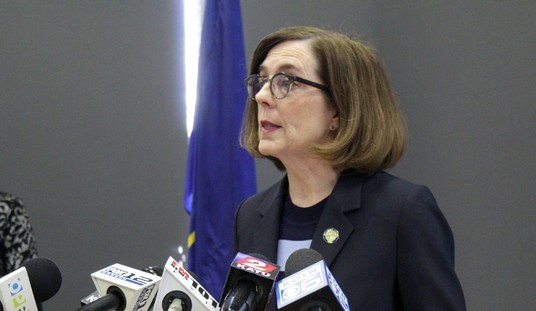Has the electorate flipped 19 points in the last two years in favor of Democrats? A new Washington Post survey of voters in nearly 70 competitive House districts shows Democrats with an edge just outside the margin of error, 50/46. A similar poll in 2016 showed Republicans up 15 points at the same time in that cycle. The warning is that a blue wave may still be materializing in swing districts:
Likely voters who live in 69 battleground House districts across the country narrowly prefer Democratic candidates, according to a new Washington Post-Schar School survey, a potentially worrying sign for Republicans given that the overwhelming percentage of these districts are currently in GOP hands.
With just a month to the midterm elections and with early voting set to begin in many states, the new poll highlights the challenge for Republicans as they seek to maintain their House majority at a time when President Trump’s approval rating remains below 50 percent despite sustained economic growth, low unemployment and a rising stock market.
The survey of 2,672 likely voters by The Post and the Schar School at George Mason University shows that likely voters in these districts favor Democrats by a slight margin: 50 percent prefer the Democratic nominee and 46 percent prefer the Republican. By way of comparison, in 2016 these same districts favored Republican candidates over Democratic ones by 15 percentage points, 56 percent to 41 percent.
Just how meaningful is this, though? It slices through some of the issues with traditional generic-ballot surveys to get to the voters where control of the House is likely to be determined, which is one point in its favor. However, the methodology is a little unusual:
Mailed invitations were sent to registered voters who were randomly selected in each district from state voter registration lists. Respondents had the option of completing the self-administered survey by computer, mobile device, tablet or phone.
That may introduce some self-selection bias into the results (as well as competence issues for self-completion), although the partisan split is nearly even (D+1). On average, the number of registered voters surveyed for each competitive race is just under 50 — hardly a substantial sample at the granular level. Overall it’s more substantial, with 3,407 RVs contacted and the above number of 2,672 of LVs, but it’s still an open question as to whether it’s truly a representative sample of the voters in each district.
Also, the previous iteration in 2016 didn’t turn out to be very predictive. Republicans supposedly had a 15-point advantage, which should have produced another Republican wave or at least a hold. However, Democrats actually gained six seats in the actual election, although that did mean that Republicans held onto a 241-194 majority. Democrats also picked up two Senate seats in the 2016 cycle, which is the opposite of what their 2016 results would have indicated. If the measure of reliability in polling is its comparison to eventual electoral results, this series doesn’t seem terribly predictive.
Finally, the polling period for the survey ran from September 19th to October 5th. The first week of that survey took place before the second hearing for Brett Kavanaugh, and the second week of it in the run-up to the confirmation vote. Other pollsters have measured a significant rise in Republican enthusiasm over the latter period especially, which means that the first half of this survey might have already been mooted by outside events.
In other words, it’s interesting, perhaps especially as a way to tune into a more accurate generic-ballot result. But it’s not compelling, and it may already be past its expiration date.








Join the conversation as a VIP Member